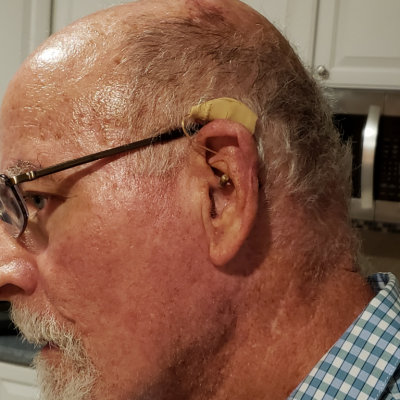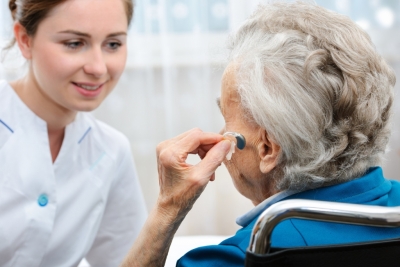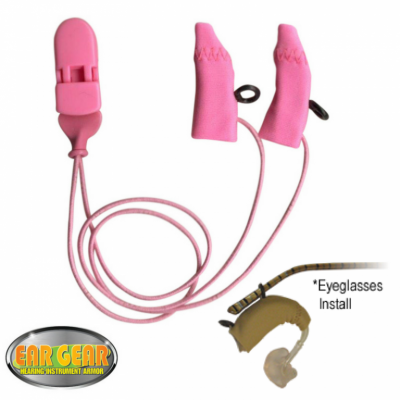When it comes to back-to-school supplies, pencils, folders and notebooks usually top the list for parents.
But if you’re a parent of a child going back to school with hearing aids, you’ll need to add a few more things to your list before the school bus arrives.
Whether your child has been wearing hearing aids for many years or they’re brand new to wearing a hearing instrument, starting a new school year can be stressful with new staff, new classrooms, new rules and new equipment to figure out.
To help prepare you and your child for going back to school with hearing aids, here are our top tips for making the transition easy and safe for everyone involved.
Pack A Well-Stocked Backpack
Sure, your child has the usual supplies—pencils, pens, spiral notepads, binders, etc.—but are they also packed with protection against the possible troubles they might face related to their hearing device?
The first of these items is the most obvious: extra batteries. The last thing you want standing in the way of your child’s ability to absorb information is having some lousy batteries die on you.
But batteries aren’t the only item your child might need. If your child is older and can handle basic maintenance, pack them with an earwax removal tool and cleaning brush.
They also might need adhesive to hold the instrument in place. This is especially important if your child has a period of activity, like PE or recess, where equipment is likely to fall out. This adhesive could be made of fabric, toupee tape, or even body glue.
Another way to protect their device from falling out is by picking up an Ear Gear protective sleeve with a cord that allows your child to clip their hearing instrument to their shirt—leaving it dangling harmlessly. At Ear Gear, our corded sleeves do that and more. Check out our shop for more details!
If your child isn’t the most organized, a hard case to hold all of their hearing supplies might be necessary. If verbal communication is a challenge, have a special notebook where you can write regular notes to your child’s teacher or aide.
Many hearing devices slowly build up static electricity, leading to an unpleasant shock or a electrical short. Put a few fabric softener sheets in your child’s backpack so they can occasionally wipe down their hearing instrument to discharge the electricity buildup.
Finally, pack a notecard in your child’s backpack with basic information about their hearing aid or processor.

Send Your Student with a Clear Head
One of the biggest ways to ensure your child is prepared for the everyday of school doesn’t come from an item, but a mentality.
This is especially true if your child is new to wearing a hearing instrument. Impress on your child that utilizing their hearing aid is crucial to their educational development.
You won’t be at the center of your kid’s world forever. Some day, they will be on their own, and it will be up to them to traverse the world, hearing loss and all. So encourage their independence and praise them for doing the right thing! Highlight what makes them great, and don’t allow them to blame others when they feel down. Don’t give them special treatment--if they have siblings, make sure they’re all on equal footing, with equal responsibilities and expectations.
Treat your child with respect and dignity--let them in on the process of hearing care, explain why wearing a hearing aid is so important and put them in control of their own destiny. Encourage them to take part in extracurricular activities. Don’t withdraw your child from sports or other after school programs solely because they require a hearing instrument. Instead, adapt to your child’s activities—perhaps by purchasing an Ear Gear protective sleeve or drying container.
If your child can have some fun with their hearing instrument, it can really help with their self-esteem. We recommend picking up a protective hearing aid sleeve in a color that reflects their personality and gives them a chance to express themselves.
Speak to coaches or extra-curricular teachers

As kids go back to school, many will join their school sports teams, music groups, drama and other activities. Each activity will have a coach or teacher that leads the group. They will need to know the same information as your child’s school teacher.
For physical activities, sweat and loss of hearing aids are especially concerning. Hearing aid sleeves like Ear Gear are very useful for protecting the hearing instrument from sweat, dirt, a surprise rain shower on the field, wind noise and loss.
Additionally, a gym or music room can be noisy places so your child’s coach or music teacher should be informed that it may be difficult to hear in these situations and that your child isn’t choosing to ignore them. Ear Gear is acoustically transparent and can help to reduce interfering noise.
Prepare your child for questions from other students
Kids are curious little people! They may not mean to be disrespectful, but their questions may hurt your child’s feelings and seem intrusive. It’s best to prepare your child for these questions.
Curiosity surrounding your child’s hearing aids may be especially high if there are many new students in the classroom or if your child is new to the school.
Speak with your child and practice how they will respond confidently to the curiosity.
Put a hearing aid care kit on the list

The back to school supply list isn’t complete without a hearing aid care kit. There should be essential tools like extra batteries, a battery tester, cleaning brush and a couple pairs of Ear Gear in the kit. What’s more, you need to show your child’s teacher how to use these tools so that your child’s hearing aids will be good to go, no matter what happens
Luckily, our Ear Gear website has you and your child’s teacher covered with all the information you’ll both need to install the sleeves onto the hearing instruments. Our website features videos to help visually guide you through installation steps as well as a Help Center page to help you problem solve.
Ear Gear comes in different models with and without clips. Your child may only need the models with clips during sports or field trips, so it’s best to keep both options available in the hearing aid care kit.
If your child is very young, leave the care kit in the teacher’s possession so that you know it’s safe. Otherwise, older kids can keep the kit in their lockers or backpacks.
Educate teachers
Teachers may not have had a child with hearing aids in their classroom before, so they would likely be very thankful for a mini learning session on the technology. They don’t want to be responsible for any mishaps with the hearing instrument either, and will do their best to follow instructions on care and use.
To ease your child’s mind, remind them about the Ear Gear in their assembled hearing aid kit or the Ear Gear already on your child’s hearing aid. Ear Gear corded models are a lifesaver and can be easily clipped to clothing to prevent loss of the hearing device. Teachers love the product and it was even rated the #1 retention device for children’s hearing aids.
Going back to school with hearing aids can be the cause of stress and anxiety for everyone. Teachers may be new to dealing with hearing aids and worry about the responsibility of keeping them safe, while making sure your child’s learning needs are being met. The child may worry about questions from other students, comfort during sports and preventing sweat and chafing. And parents? Well, they’re concerned about it all!
With these tips, you can relax knowing the transition has been carefully planned and everyone is on the same page, making going back to school for children who wear hearing aids a pleasant and fun experience.
Don’t have your Ear Gear ready for back to school?? Order today and we will ship out as quickly as we can. Visit us online at www.gearforears.com






